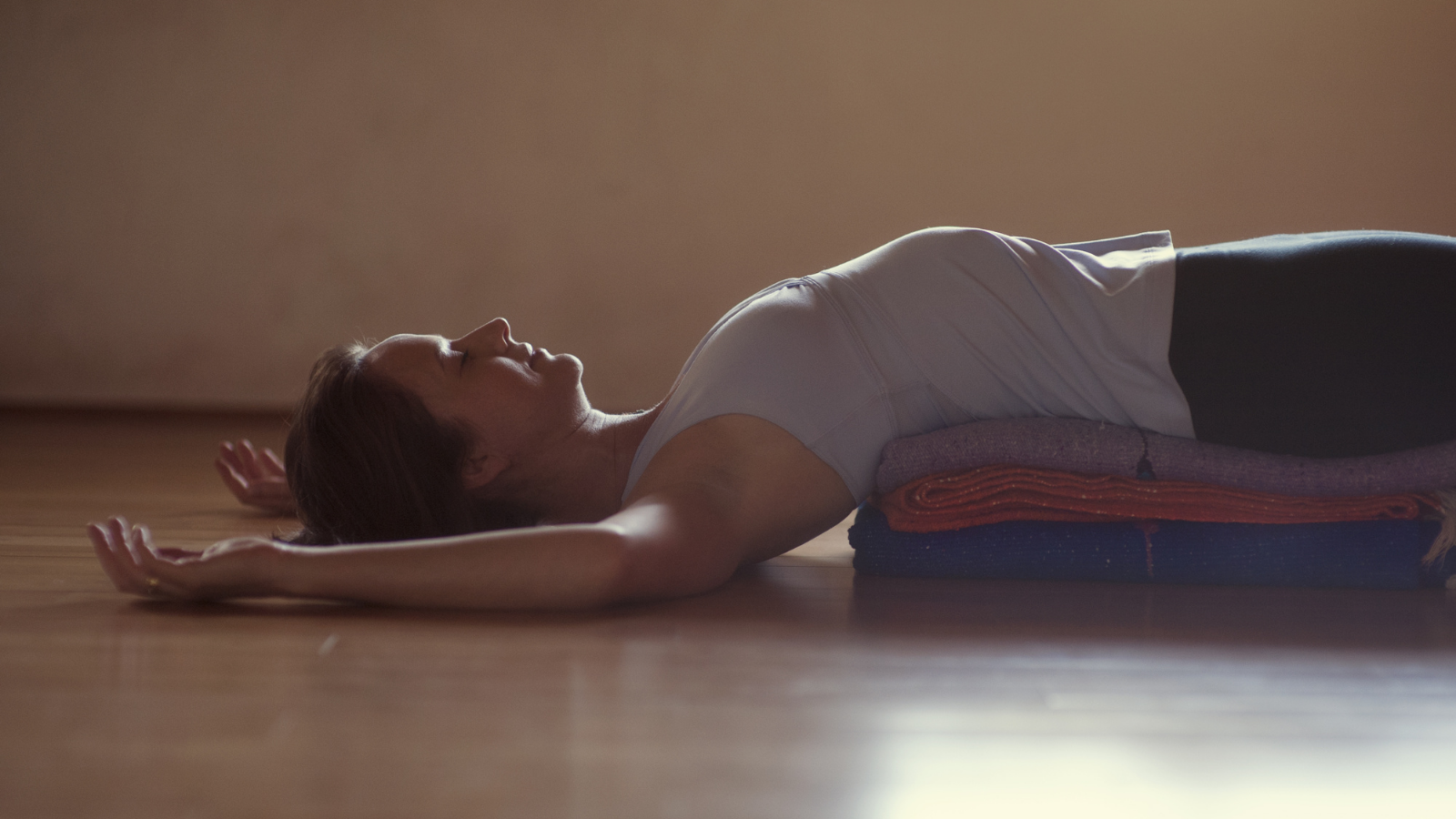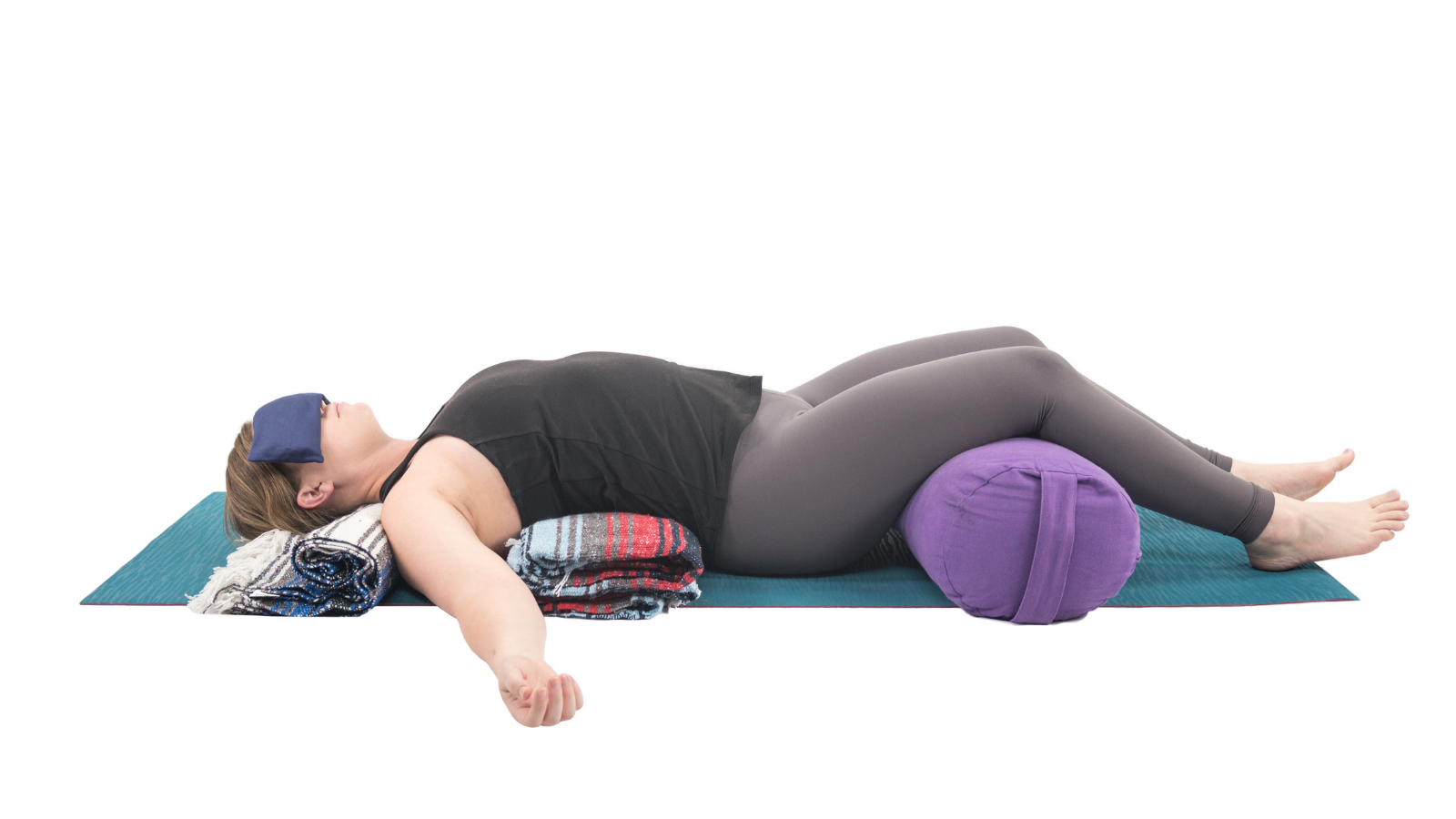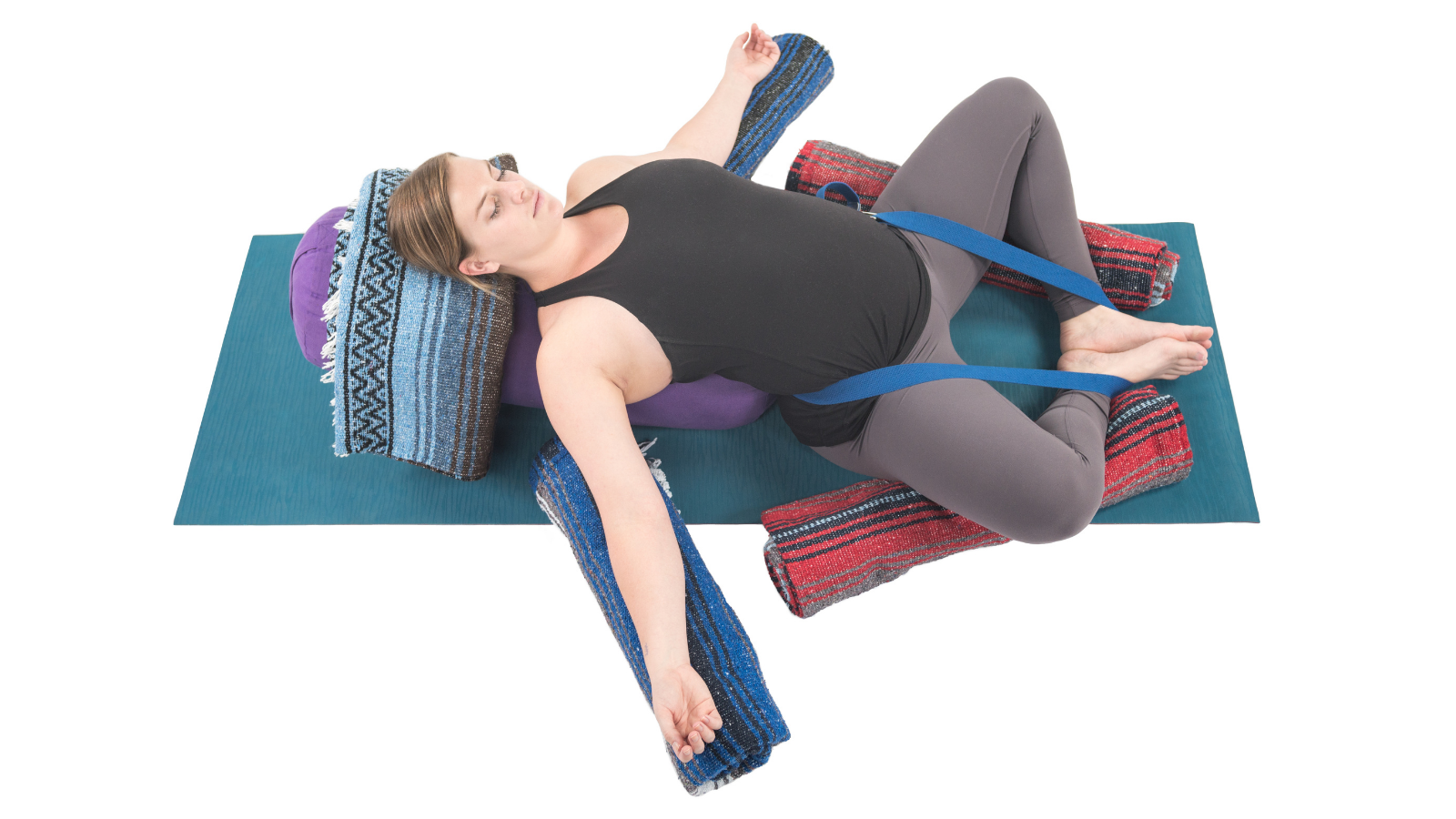Postpartum Depression: A Calming Yoga Sequence

New parents may expect the first year of their baby’s life to be filled with joy. But what happens if feelings of exhaustion, frustration, and depression dominate our days? Rather than being a cause of shame or a sign of weakness, postpartum depression is a complication of birthing that can be widespread among new parents. This article explores the research and theory behind yoga as a tool for granting new parents permission to heal.
What is Postpartum Depression?
The whirlwind of life changes following childbirth can make new parents susceptible to feeling down or depressed. For example, physical changes, such as the dramatic drop in the hormones estrogen and progesterone following childbirth, and sleep deprivation that can accompany having a newborn can both impact new parents’ moods. In addition, social or emotional stressors like the pressure to “bounce back” to a prepregnancy body, or the identity change new parents may experience can contribute to depressed feelings. Although sadness may be stigmatized among new parents, experiencing the “baby blues” is extremely common in the two weeks after childbirth, often leading to mood swings, anxiety, and sleep difficulties.
When the “baby blues” last longer than two weeks after childbirth, it may be a sign of postpartum depression (PPD), which is a form of major depression that occurs in about 20 percent of birthing people (1). Postpartum depression can begin anytime in the first year after childbirth and can be characterized by a depressed mood, loss of pleasure in daily activities, and feelings of hopelessness.
In addition to these symptoms, individuals with postpartum depression may continue to experience issues common to the early stages of parenthood, such as fatigue, changes in appetite, and decreased sex drive. As with any physical changes that arise after pregnancy and childbirth, it can take time, attention, and intention to heal from postpartum depression.
Research on Yoga and Postpartum Depression

Many treatments for postpartum depression focus on addressing the physical, social, and emotional changes that accompany parenthood, such as counseling, medication, and new parent support groups. Currently, there is research to support yoga or other group physical activity classes as safe, acceptable, and potentially effective in reducing depression during pregnancy and the early postpartum period (2,3).
Research specific to yoga as a treatment for postpartum depression is limited, but at least one randomized control trial published in Complementary Therapies in Clinical Practice has shown yoga to be an effective complementary therapy for postpartum depression that warrants further investigation (1).
In this study, authors randomly assigned 57 postpartum women to a program consisting of 16 yoga classes over 8 weeks or to be waitlisted for the program. After eight weeks, 78 percent of participants who participated in the program saw clinically significant improvements in depression or anxiety, which was a significant improvement compared with waitlisted participants. These results show the promise yoga may hold as a potential complementary treatment for postpartum depression.
A Calming Yoga Sequence
After having a baby, I found gentle movement and restorative yoga to be a welcome refuge from the emotional roller coaster of early parenthood. Because my baby arrived in the midst of the pandemic, I was unable to experience the social support that can come with practicing in-person with a community. Nevertheless, I cherished yoga as a personal practice.

Amidst the many hours of devoting my energy to my baby’s needs for food, comfort, and sleep, yoga gave me permission to feel into my own body. These two heart-opening restorative postures felt especially healing in countering the effects of hunching over to nurse and hold my baby. Sometimes I found time to practice in the rare spare moments when my baby quietly napped, but other times, I attempted to practice with my baby snuggled on top of me. In either case, I found the intention to practice to be more important than the outcome. Even a fleeting moment of stillness and silence seemed to allow me to reset.
As with any form of postpartum movement, check in with your medical provider to make sure you are cleared to exercise before practicing these shapes. It’s also important to know that practicing these shapes or any form of yoga won’t substitute for postpartum depression treatment. It’s important to speak with a physician if you think you might be experiencing postpartum depression. More importantly, if you have thoughts of harming yourself or your baby, seek immediate support from loved ones, from a mental health professional, or by calling 911.
Mountain Brook Pose:

- Position one folded blanket at the back of your mat to create a pillow for your head. Create a small roll with the edge of the blanket to cradle the back of your neck.
- Place one small bolster or two blankets folded in thirds in front of the blanket for your head. This prop will support the backs of your shoulder blades.
- Set a bolster, pillow, or rolled-up blanket toward the front of your mat. This will be used to support the backs of your knees.
- Optional: Take a thinly rolled blanket or rolled-up towel to the front of your mat to support the backs of your ankles.
- Lie down over your props. Position yourself so the back of your head, the back of your heart space, and the back of your knees are fully supported by your props.
- Optional: Place one final blanket over your abdomen for warmth and grounding and gently lay an eye pillow over your eyes.
- Let your body soften into this shape. Stay for 5 to 15 minutes before bending your knees to slowly roll off the props.
Reclined Bound Angle Pose (Supta Baddha Konasana):

- Position one yoga block at the tallest setting at the back of your mat. Place a second block in front of it on the medium height. Place a bolster on top of this staircase of blocks so that it is slanted upward toward the head end of your mat.
- Sit down in front of the bolster with your sacrum close to the edge of the bolster touching the mat.
- Position two rolled-up blankets on either side of your legs. Bend your knees, bring the soles of your feet to touch, and let your knees settle onto the rolled-up blankets.
- Optional: Make a wide loop with a yoga strap. Bring the strap around you so that the back of the strap touches your sacrum and the front hugs your ankles and wraps under your feet. This strap energetically helps to secure your body in place and can feel especially grounding postnatally.
- Once your props are in place, lie down over your bolster. Ground the tops of your hands onto your yoga mat with your palms facing upward.
- Optional: Place one final blanket over your abdomen for warmth and grounding and gently lay an eye pillow over your eyes.
- Settle into this second shape. Stay for 5 to 15 minutes before lifting your knees up to vertical, and slowly roll off the props.
Also, read...
A Daily Yoga Sequence for Pelvic Pain
Yoga for Pelvic Floor Health: Why Kegels May Do More Harm than Good
Study Shows that Muscle Strength Predicts Better Cognitive Functioning
Related courses

Lacey Ramirez works for YogaUOnline and is an ERYT-200 yoga teacher, global health researcher, and writer based in the California Bay Area. Through her work, she seeks to make yoga accessible, inclusive, and equitable.
Lacey discovered yoga as a tool for centering during her years as a competitive runner. Since then, yoga has served as a way to connect with her body throughout her experience of pregnancy and parenthood. She teaches because she hopes others can use this sacred practice for calming, healing, and transformation.
As a yoga teacher, Lacey specializes in teaching restorative, Yin, prenatal, and trauma-informed Vinyasa yoga. She has also completed birth doula and prenatal/postnatal barre certifications and trainings. Additionally, she holds a Masters of Science in Global Health and Population from Harvard T.H. Chan School of Public Health. To learn more and connect, visit her website laceyramirez.com.
References
- Buttner, M. M., Brock, R. L., O’Hara, M. W., & Stuart, S. (2015). Efficacy of yoga for depressed postpartum women: A randomized controlled trial. Complementary Therapies in Clinical Practice, 21(2), 94–100. https://doi.org/10.1016/j.ctcp.2015.03.003
- Eustis, E. H., Ernst, S., Sutton, K., & Battle, C. L. (2019). Innovations in the treatment of perinatal depression: The role of yoga and physical activity interventions during pregnancy and postpartum. Current Psychiatry Reports, 21(12), 133. https://doi.org/10.1007/s11920-019-1121-1
- Sheffield, K. M., & Woods-Giscombé, C. L. (2016). Efficacy, feasibility, and acceptability of perinatal yoga on women’s mental health and well-being: A systematic literature review. Journal of Holistic Nursing: Official Journal of the American Holistic Nurses’ Association, 34(1), 64–79. https://doi.org/10.1177/0898010115577976



